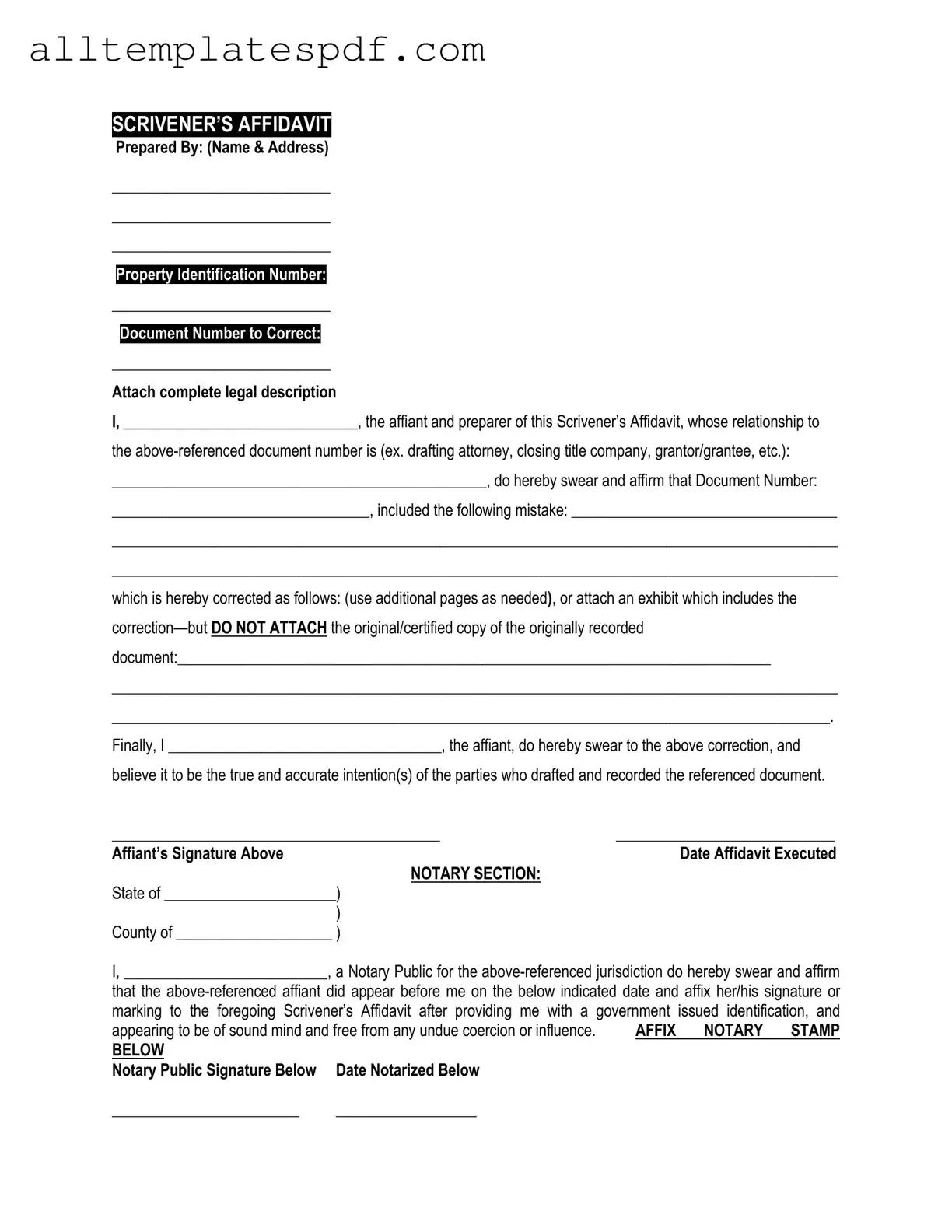When filling out the Scrivener's Affidavit form, individuals often overlook critical details, leading to potential delays or complications. One common mistake is failing to provide complete and accurate information. Each section of the form requires specific data, and omitting any part can result in the affidavit being deemed invalid.
Another frequent error involves incorrect signatures. It is essential that the person executing the affidavit signs it in the appropriate place. If the signature is missing or placed incorrectly, it may not be recognized as valid, which can hinder the intended legal process.
Many people also neglect to date the affidavit. A date is crucial as it establishes the timeline of events and the validity of the document. Without a date, the affidavit may be considered incomplete or outdated.
In addition, individuals often use vague language when describing the facts or circumstances surrounding the affidavit. Clarity is key. Providing specific details helps ensure that the affidavit accurately reflects the situation and meets legal standards.
Another mistake is not having the affidavit notarized. Most jurisdictions require a notary public to witness the signing of the affidavit. Failing to have this step completed can render the document unenforceable.
Some individuals may also use outdated versions of the form. Legal documents can change over time, and using an older version may lead to compliance issues. It is important to verify that the latest version of the Scrivener's Affidavit is being used.
Misunderstanding the purpose of the affidavit can lead to significant errors. Individuals should clearly understand what the affidavit is meant to accomplish and ensure that it aligns with their intentions. Misalignment can result in wasted time and resources.
Additionally, people sometimes forget to review the completed form for errors. A thorough review can catch mistakes in spelling, grammar, or factual inaccuracies that could compromise the document's integrity.
Finally, failing to keep a copy of the signed affidavit is a common oversight. Retaining a copy is essential for personal records and may be necessary for future reference or legal proceedings.
